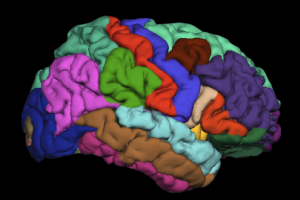一、项目背景
由MIT计算机科学与人工智能实验室(CSAIL)教授牵头,目前正在进行一个新型未来智慧城市Universal Village(UV)项目研究计划。未来智慧城市(UV)是一个理想的未来社会,为居民提供可持续的幸福,是智能城市的扩展和高级版本。 UV项目计划主要通过先进的人工智能技术及其研究的主要子系统技术,包括智能医疗,智能交通,智能环境,智能能源管理和环境保护,经济与社会等来探索提高人们生活质量的系统方法。除了这些技术方面外,还涵盖了智慧城市的人文和社会方面,包括人们对未来生活方式的研究和探索。研究项目将有利于政府,企业和大学就具体议题以及与未来智慧城市有关的实际解决方案中从而受益。
MIT计算机与人工智能实验室以及各个研究中心开展的研究项目都是应用高科技知识和技术来解决人与社会、城市等更和谐的发展,UV项目研究计划将在智能交通技术、计算视觉技术、机器人、人工智能应用、能源与环境、环球村经济人文和谐发展等领域加大研究力度,同时也为优秀的学生们创造条件深入到科学研究的第一线,真实的科研学术环境帮助学生更深入、更直观地完成学习体验的同时,也能为优秀的学生带去更有效的学习方式。
二、项目说明
面向对象:欲以申请计算机或人工智能、机电工程、材料与能源环境等方向本科生、研究生,以及勇于挑战的高中生
软性背景:有一定的科研履历者优先
科研导师:麻省理工学院计算机与人工智能方向专业导师
科研形式:实地科研或者远程线上科研,导师授课+练习实战结合,完成课题学习、选题、研究实战及报告撰写。
phase 1:课题基础知识学习,课程+文献阅读
phase 2:确定研究课题,讨论研究思路以及研究进展
phase 3:汇报答辩+报告撰写
科研周期:实地科研:寒暑假期间,前往MIT大学校内,每期时长为4周(针对假期不足4周的同学,可采取实地+远程相结合的方式);
三、项目/研究课题简介
以下领域内的相关课题,具体课题根据学生的基础,导师面试后确定。
1) smart home & community, 智能家居与社区
2) smart healthcare, 智能医疗
3) intelligent transportation systems, 智能交通系统
4) smart energy management, 智能能源管理
5) smart infrastructure,智能基础设施
6) smart response system for city emergency, 城市突发事件智能响应系统
7) smart environmental protection, 智能环保
8) smart humanity,智能人文
四、课题大纲
Direction 1A: [Smart System Evaluation & Framework Design]
Direction 1B: [City Evaluation and Framework Design for Universal Village]
Direction 2: [Smart Technology Evaluation & Improvement]
Direction 3: [AI Algorithm Evaluation & Improvement]
Direction 4: [Modeling, Simulation, System Analysis & In-depth Understanding]
课题案例:
Three-Dimensional Vision System for Traffic Monitoring
The Problem and Goal:
Traffic monitoring systems detect traffic accidents and congestion for immediate assistance and/or traffic flow control. Conventional loop detectors are installed under the pavement and require regular maintenance which is disruptive to traffic. TV-camera based systems are an alternative solution providing non-disruptive monitoring. An advantage of TV-camera-based traffic monitoring systems over loop detectors and acoustic detectors is that the traffic control centers can have a first hand view of the traffic situation. The problem with conventional TV- camera-based systems is that the systems are confused with overlapping vehicles and shadows, and the systems cannot provide highly accurate measurement results. To avoid overlapping vehicles, overhead structures are used. These structures usually cost more than the machine vision systems.
Our goal is to develop a three-dimensional system for reliable traffic monitoring solving the problem of overlapping vehicles and shadows.
Approach:
Our traffic monitoring system is a TV-camera based system to provide traffic control centers with a real-time view of the traffic situation. We use our three-dimensional vision system described on page 15 to address the accuracy problems with conventional two-dimensional systems. The cameras are located on the side of the road as shown in Figure 1 and expensive overhung structure is unnecessary. The system uses three-dimensional data to eliminate problems with overlapping vehicles and shadows.

The three-camera system produces an edge depth map containing the distances of the edge of objects in the image. The three-dimensional data is used to distinguish between vehicles and enable traffic monitoring. Figure 2 displays the center image and the edge depth map. The colors indicates the different distances of the object.
Figure 3 is a histogram of the distance vs. number of edges in the depth map. Therefore vehicles are distinguished by the distance from the cameras. Each peak in the histogram correlates to an object in the image.
Current Status and Future Work
Currently the cost-effective real-time three-dimensional vision system is completed and research is being done on distinguishing between overlapping vehicles and shadow elimination. Short term goals consist of vehicle classification, counting and speed measurements. Long term goals involve the development of an automatic incident detection algorithm.

五、项目收获
◆ 深入学习该领域知识和研究方法,积累科研经历和经验;
◆ 完成学术科研报告或者科研论文;
◆ 优秀学员将获得导师推荐信,助力世界名校申请;
◆ 学术成果有机会在专业国际学术期刊或EI/CPCI国际会议收录发表;
◆ 积累学术领域人脉;
◆ 有机会参加校内的讲座/专家研讨/学术活动等。
相关资料:
Three-Dimensional Vision System for Traffic Monitoring






